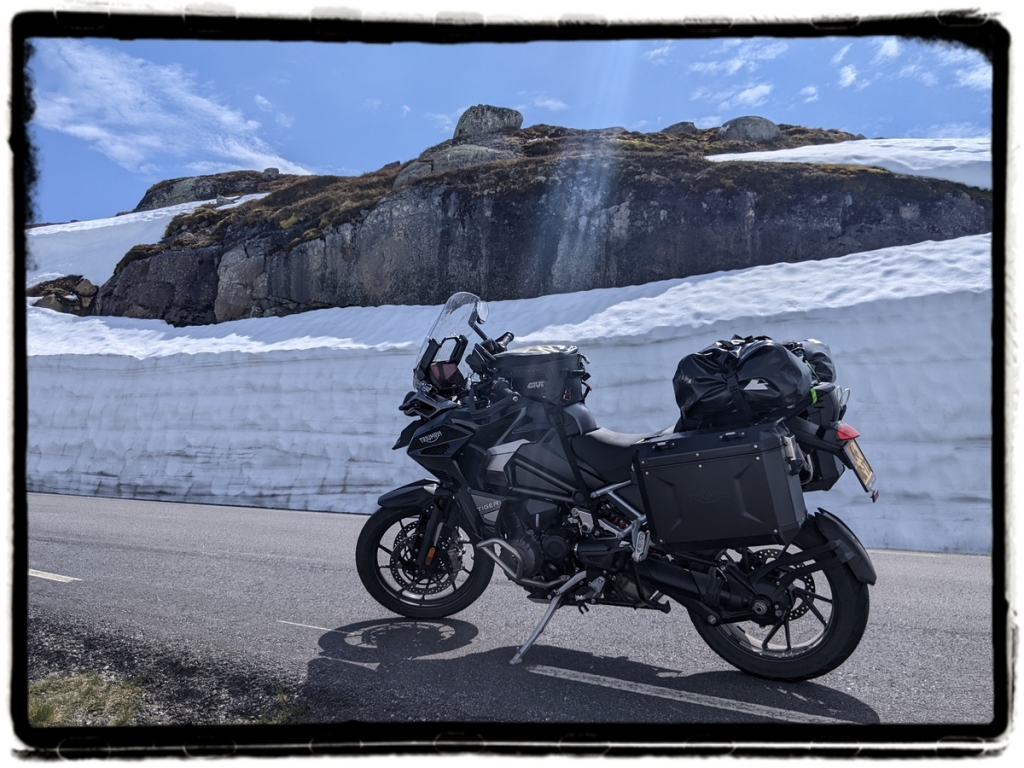
It’s a tough battle if you’re a heavyweight adventure bike and want to maintain your position in the market. The dominance of the Gelände/Straße seems unshakable while almost every other brand is battling for one of the positions below the German overlord. And if you don’t want to fall hopelessly behind, you have to bring some innovation to your models regularly.
The Triumph Tiger 1200 is perhaps the most direct competitor to King GS. With the disappearance of the Yamaha Super Ténéré and the Honda Crosstourer, it’s the only remaining rival with shaft drive. The Moto Guzzi V85 TT also features a shaft drive, but with its 850 cc, it belongs to the adventure middle class.
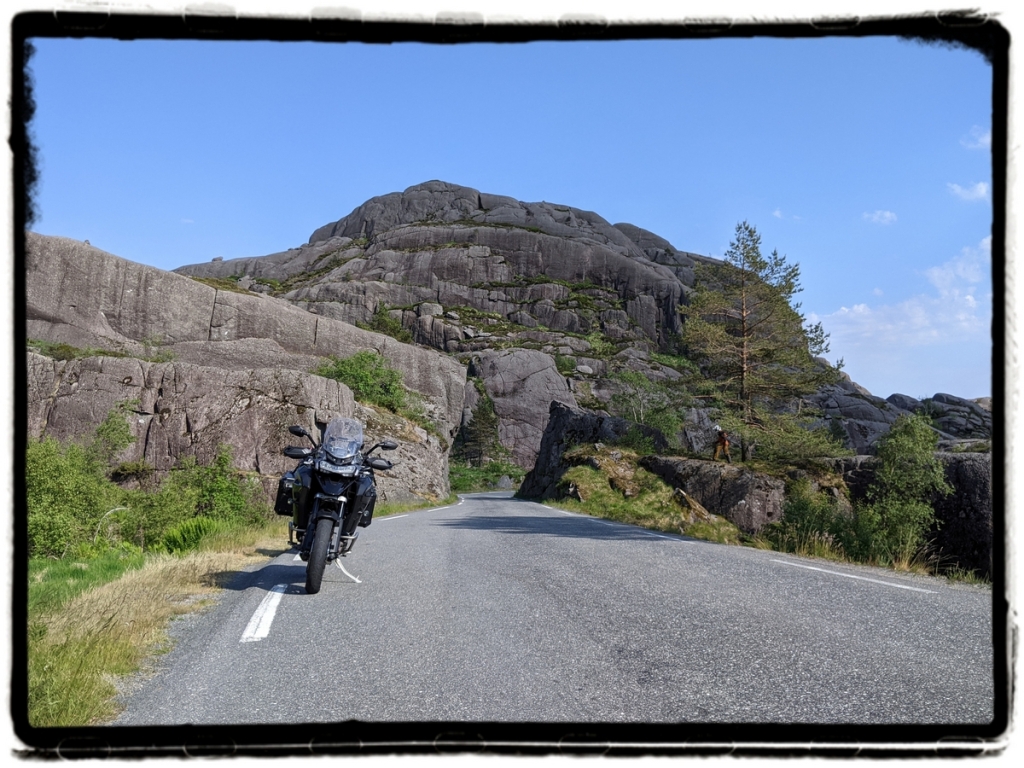
The heaviest adventure bike from the Triumph stable first came to life in 2012 as the Triumph Tiger Explorer. It underwent a major update in 2018 when it was renamed the Tiger 1200, and then reincarnated for a third time in 2022.
The team from Hinckley started from scratch for this resurrection and built a completely new model. They chose the 1,160 cc inline-triple engine from the Speed Triple as the base, making adjustments to the ignition sequence and crank pins. These modifications were intended to provide stronger low-end power while maintaining the power in the mid-range and at higher rpm’s.
The frame, driveshaft and design were also reevaluated, with the electrically adjustable windscreen being replaced by a manual one. Additionally, the single-sided swingarm was exchanged for a double-sided one. Overall, this resulted in a weight reduction of 25 kg compared to its predecessor, which was already about 10 kg lighter than the first generation. The Weight Watchers Club certainly approves.
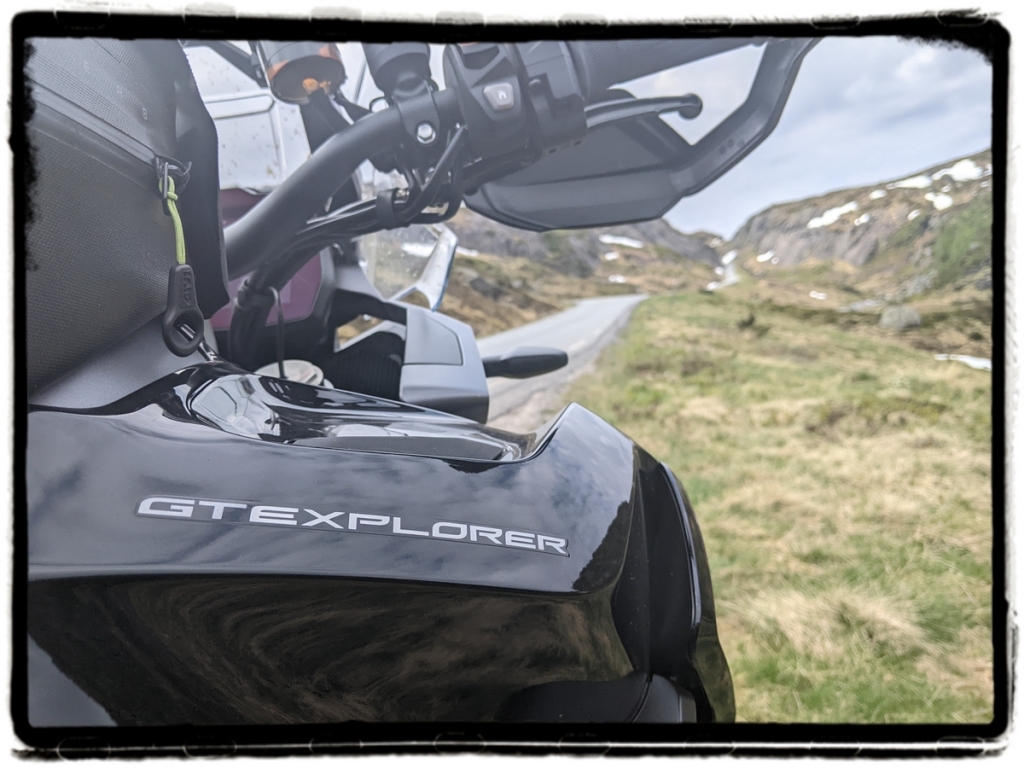
As we’ve become used to with Triumph’s adventure models, the new 1200 comes in various versions. The three GT models are more road-oriented, while the two Rally models are more focused on off-road riding. I had the opportunity to ride a Triumph Tiger 1200 GT Explorer on a journey of over 4,000 km from Belgium to South Norway and back (the report of which will follow later).
The GT Explorer is the most generously equipped Tiger in the GT range. You’ll find features such as a quickshifter, fog lights, keyless ride, center stand, adaptive cornering lights, cruise control, hill hold function, and heated grips already installed on the GT Pro. On the Explorer, there’s also a larger fuel tank (7.92 gal instead of 5.28 gal), blind spot radar, heated seats front and rear, tire pressure monitor, and crash bars. With such equipment, you can’t expect bargain prices. The starting price for the GT Explorer is $23,595.
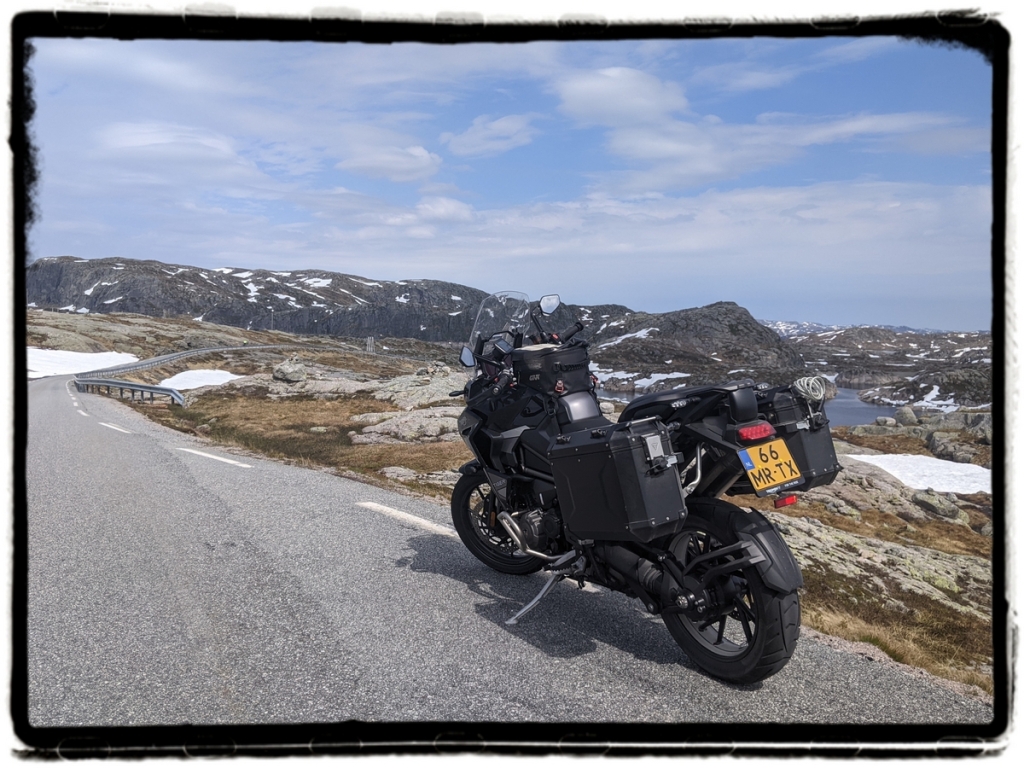
In 2017, I embarked on a trip to the Alps with the first generation of this bike. The main findings were that it offered plenty of comfort and had an excellent suspension, but it felt a bit heavy. I was curious to see how this had evolved over two generations.
Visually, the new Tiger has definitely become more attractive, at least when you look at its front end. However, at the back, there’s a terrible blind spot sensor that ruins the whole rear. A big design fail if you ask me. The blind spot indicators are integrated into the mirrors, and just like in cars, I’m still not a fan of the system. It works, but not 100% perfectly, so when in doubt, I still take an extra look in the mirrors or over my shoulder … making the system useless for me.
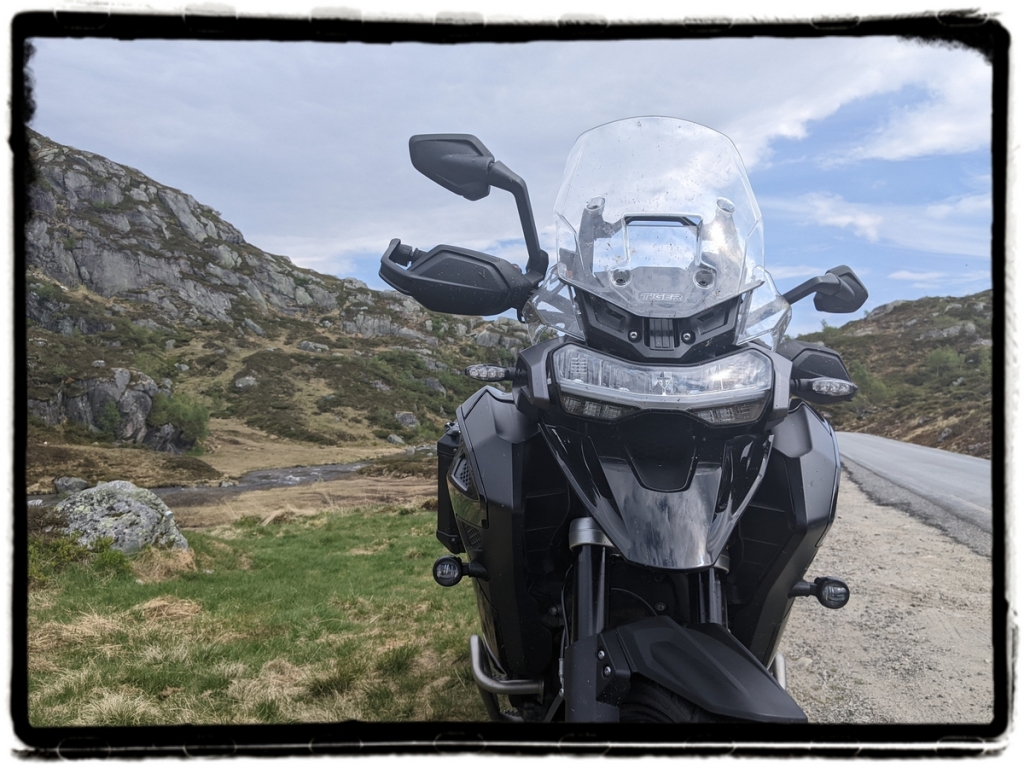
But let’s ignore that rear end with its grotesque blind spot sensor for a moment. Fortunately, its front end is quite impressive and gives the Tiger 1200 a lighter, sharper, and slightly more aggressive look. Without weighing it, you would already say that it’s lighter than its older sibling. The GT Explorer has a fairly wide presence around the tank, although the 7.92 gal tank is hardly distinguishable from the 5.28 gal one. Impressive work indeed.
I found the first generation of this adventure bike to be particularly comfortable, and that remains true for the new Tiger. The sitting position is still relaxed and upright, and the fairing and windscreen effectively shield you from the wind and manage to keep you quite dry even during heavy rain showers.
The windscreen now requires manual adjustment, which can be done while riding. In the highest position, the top of my helmet was just outside the wind stream, and I experienced no turbulence. In the lowest position, I rode with my head fully in the wind. Of course, your height plays a determining role here.
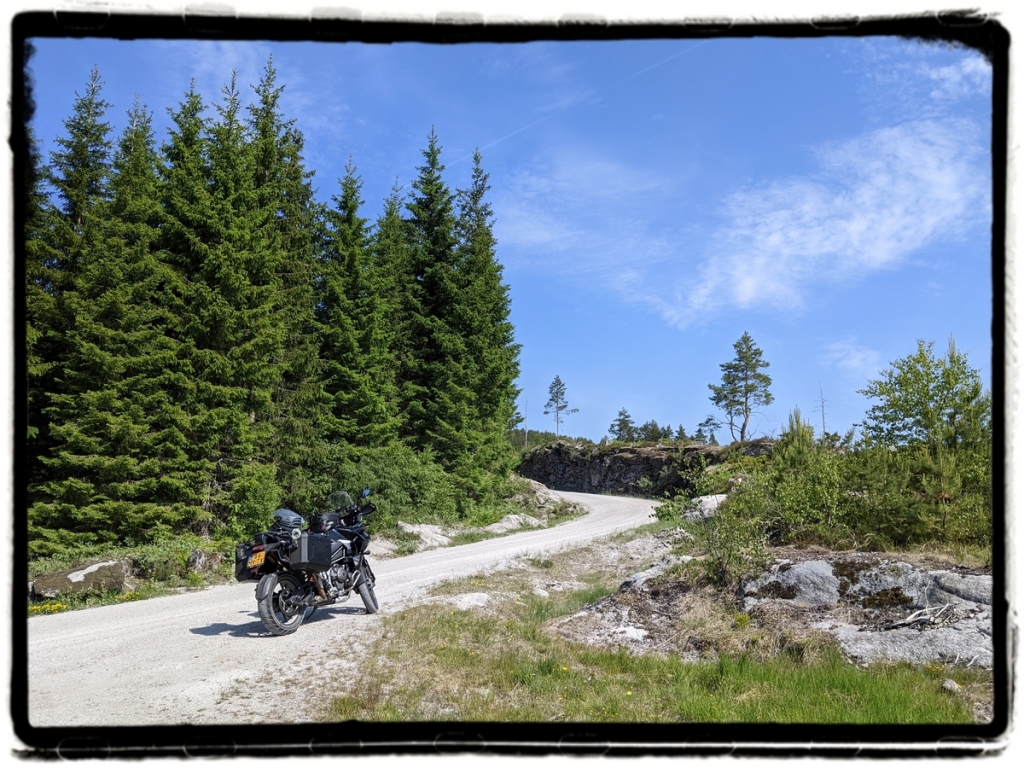
The cruise control makes long distances more easily manageable, and it works flawlessly on the Tiger. It may be a bit peculiar that Triumph didn’t opt for adaptive cruise control while choosing a blind spot radar.
Now let’s talk about the engine. The new 1,160 cc inline-triple produces 150 hp at 9,000 rpm and 130 Nm of torque at 7,000 rpm. In comparison, the previous generation with its 1,215 cc engine achieved 139 hp at 9,350 rpm and 122 Nm of torque at 7,600 rpm. It’s difficult to recall the exact experience with the first generation after 6 years, but the triple certainly feels spirited.
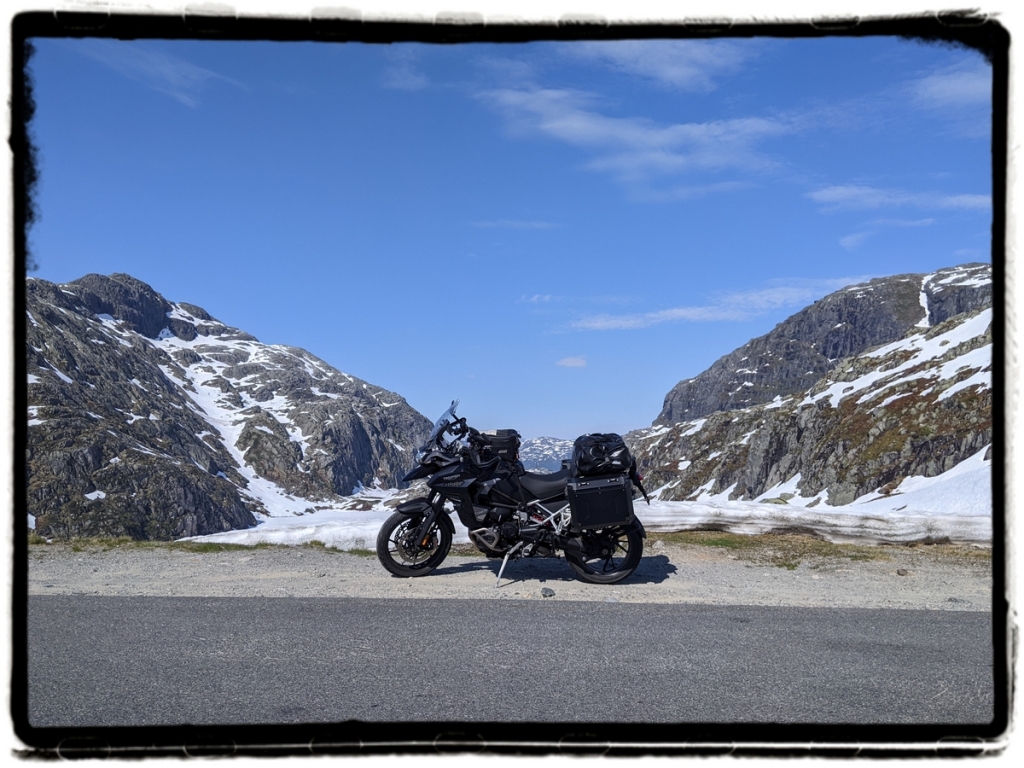
What I’m certain about is that the sensation of having a triple between your legs has diminished significantly. Gone is that blissful howling triple sound; the modifications to the engine make the 1200 sound more like a twin. I found this to be a major disappointment. Moreover, it also changed my riding behavior. While the sound of a triple used to encourage me to rev the engine high, the twin-like sound now automatically tempts me to upshift earlier.
Regardless, as expected from a triple, it pulls smoothly at all rev ranges. It shoots off like a startled animal from the bottom end, especially with the quickshifter. That quickshifter generally performs excellently, but occasionally it does falter. The same goes for manual shifting. For instance, there was a time when the gearbox didn’t want to manually shift from 3rd to 2nd, but it shifted flawlessly with the quickshifter. Finding neutral wasn’t always easy either.
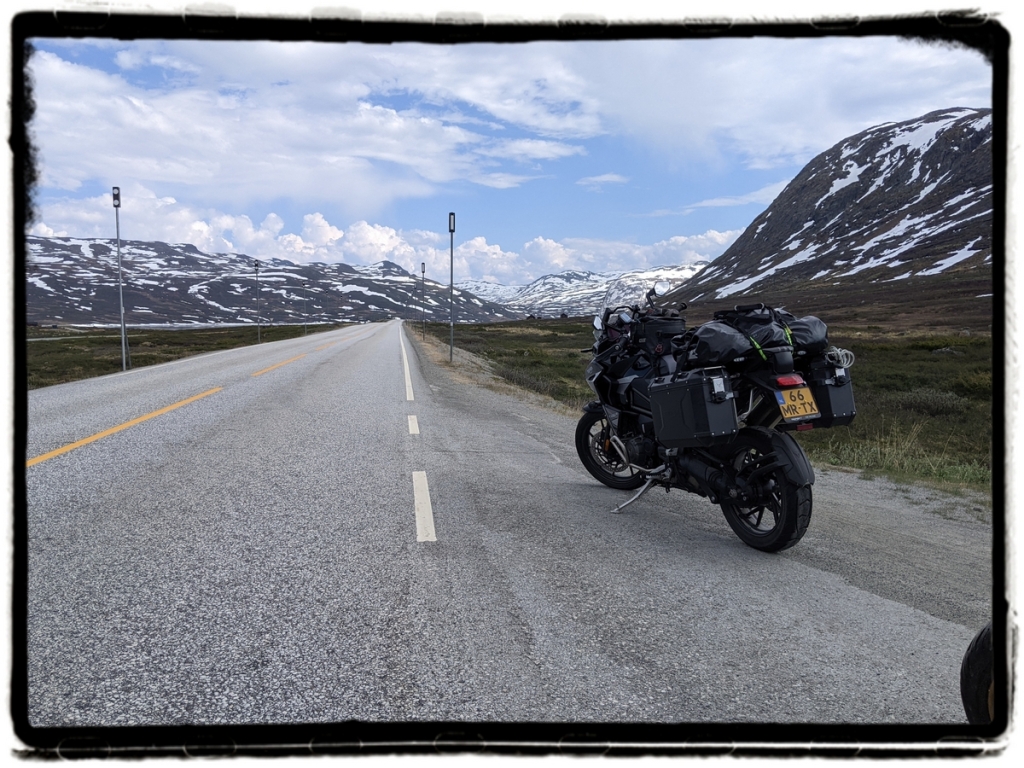
Triumph equipped top-notch Brembo components to bring all that power (and weight) to a halt. Whether it’s gentle braking or slamming on the brakes, the Stylema’s handle it with ease both at the front and rear.
I covered most of my test period on the Tiger with a week’s worth of camping gear on it, and in slow corners, it was hard to ignore that weight. The bike has a tendency to fall into the corner, which it doesn’t do when I was riding without the panniers. Then, its handling felt much more playful. Fast corners were super stable, both with and without full load, as long as you set the suspension firm enough.
That’s where the Showa semi-active suspension comes into play, which has been exemplary since the first generation. The suspension automatically adjusts to the load and road conditions. Additionally, you have five riding modes (Road, Sport, Rain, Offroad, and the customizable Rider mode), each with their own settings for throttle response, ABS, traction control, and suspension.
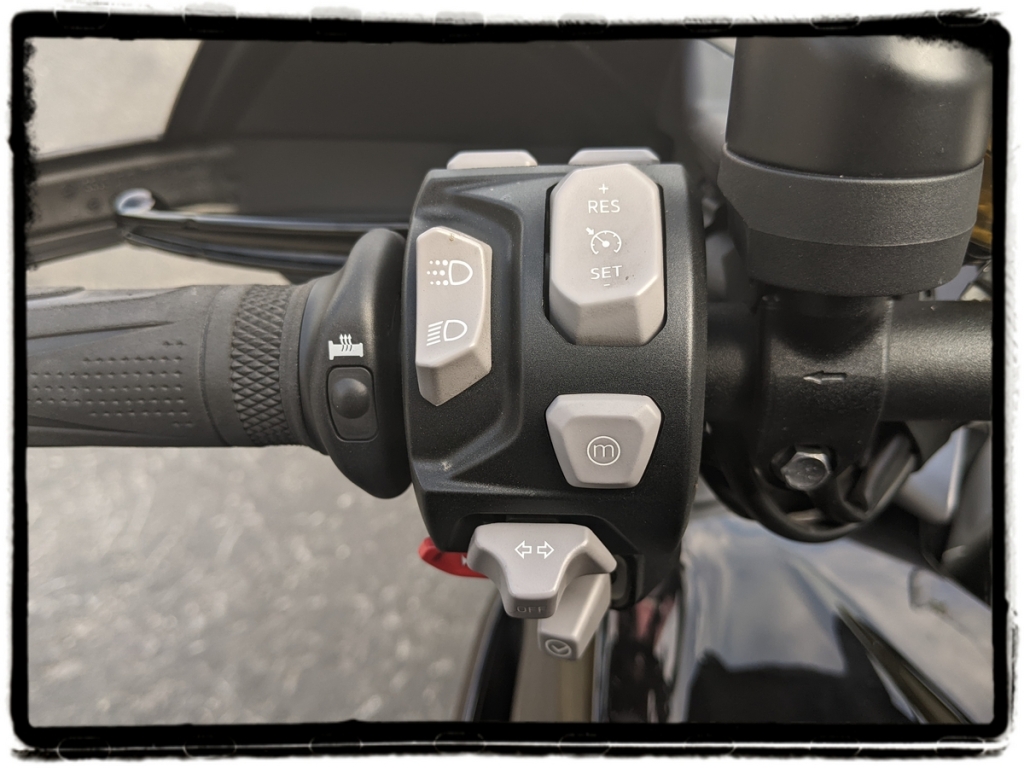
My trip to Norway proved it’s worth playing around with these modes. Road mode was fine on the highway but a bit too relaxed on twisty terrain, and the traction control struggled on the gravel roads until I switched to Offroad mode. In Sport mode, there was occasionally a slight on-off feeling, but never overly pronounced.
Navigating through all the settings is easy with the buttons and five-way joystick, which you can also find on other Triumph models. The only downside here is the display, which, although clear and with a simple menu structure, doesn’t allow you to group your favorite information. For example, if you want to see the trip meter, range and tire pressure, you can’t display them together in a single favorites menu.
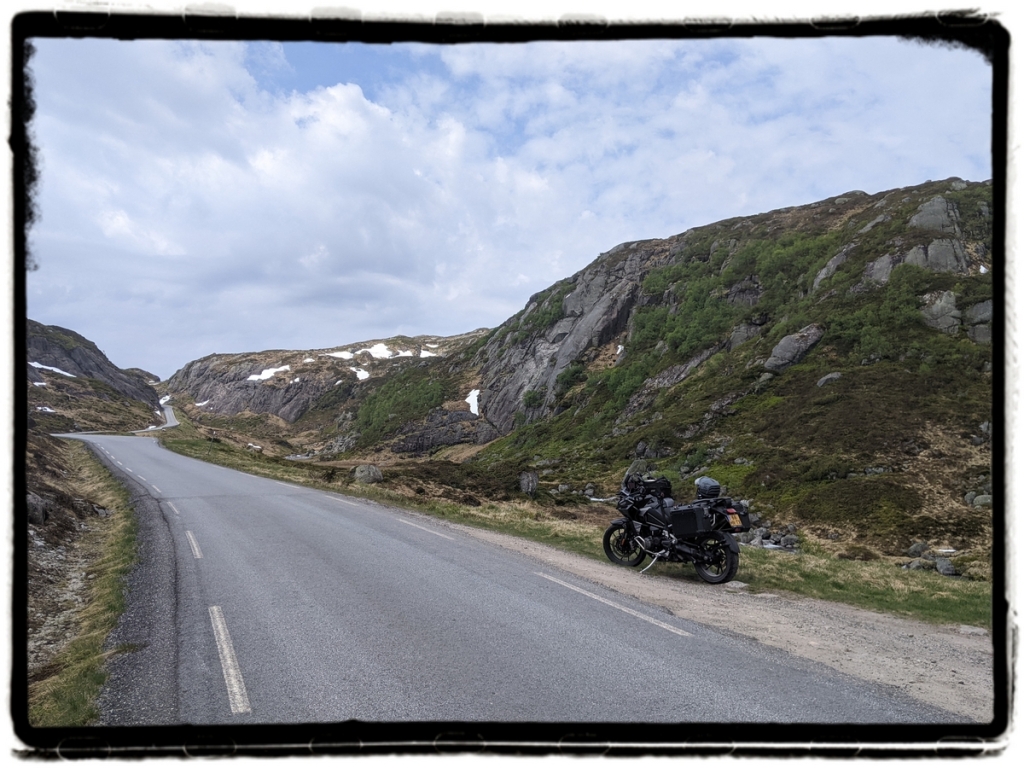
Conclusion
The Triumph Tiger 1200 GT Explorer has everything you would expect from a modern adventure bike. It offers a lot of comfort, a powerful engine, and the latest technology. The weight reduction is noticeable, especially compared to the first generation, and combined with the excellent suspension and the triple engine power, it delivers a lot of riding pleasure. Long-distance trips with this bike? Easy job. The major disappointment for me was the disappearance of the triple sound. In my opinion it took away the soul from this otherwise distinctive adventure bike. Will it be the ultimate GS killer? The chances are slim, though the Tiger 1200 certainly is a good motorcycle, but its Italian, Austrian, American, and Japanese counterparts are equally formidable. It will ultimately depend on your personal criteria.
Pros
+ High comfort level
+ Convincing engine and suspension
+ Packed with equipment (including that 7.92 gal tank!)
Cons
– Bye bye triple sond
– Gearbox isn’t flawless
– Blind spot sensor screws up design of the rear.
Tech specs
Engine and transmission
Type: Liquid-cooled, 12 valve, DOHC, inline 3-cylinder
Capacity: 1160 cc
Bore: 3.54″
Stroke: 2.38″
Compression: 13.2:1
Max Power: 147 HP / 150PS (110.4kW) @ 9,000rpm
Max Torque: 130 NM – 95 Lb/Ft @ 7,000 rpm
System: Multipoint sequential electronic fuel injection with electronic throttle control
Exhaust: Stainless steel 3 into 1 header system with underslung primary silencer and side mounted secondary silencer
Final Drive: Shaft drive
Clutch: Hydraulic, wet, multi-plate, slip and assist
Gearbox: 6 speed
Frame
Frame: Tubular steel frame, with forged aluminium outriggers. Fabricated, bolt-on aluminium rear subframe.
Swingarm: Twin sided “Tri-Link” aluminium swingarm with twin aluminium torque arms.
Front Wheel: Cast aluminium, 19 x 3.0in
Rear Wheel: Cast aluminium, 18 x 4.25in
Front Tire: Metzeler Tourance, 120/70R19 (M/C 60V TL)
Rear Tire: Metzeler Tourance, 150/70R18 (M/C 70V TL)
Front Suspension: Showa 49mm, semi-active damping USD forks. 7.87″ travel.
Rear Suspension: Showa semi-active damping monoshock, with automatic electronic preload adjustment. 7.87″ wheel travel.
Front Brakes: Brembo M4.30 Stylema monoblock radial calipers, OC-ABS, twin 320mm floating discs. Magura HC1 span adjustable radial master cylinder with separate reservoir.
Rear Brakes: Brembo single piston caliper, OC-ABS, single 282mm disc. Rear master cylinder with remote reservoir.
Instrument Display and Functions: Full-colour 7” TFT instrument pack with My Triumph Connectivity System
Dimensions and weights
Width Handlebars: Handlebars 33.42″, handguards 38.66″
Height Without Mirror: Low screen 56.53″, high screen 58.93″
Seat Height: Adjustable 33.46/34.52″
Wheelbase: 61.41″
Rake: 24.0 º
Trail: 4.72″
Tank Capacity: 7.92 US Gal
Wet Weight: 562lbs
Well done. As a owner of 1200 Rally Explorer I agree with your review
LikeLike
Thank you Dusty!
LikeLiked by 1 person